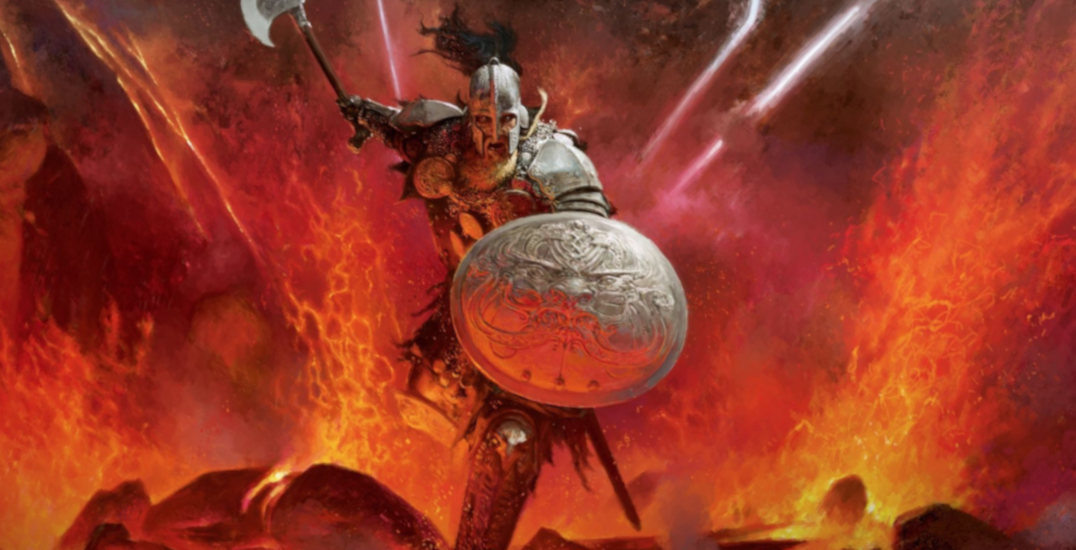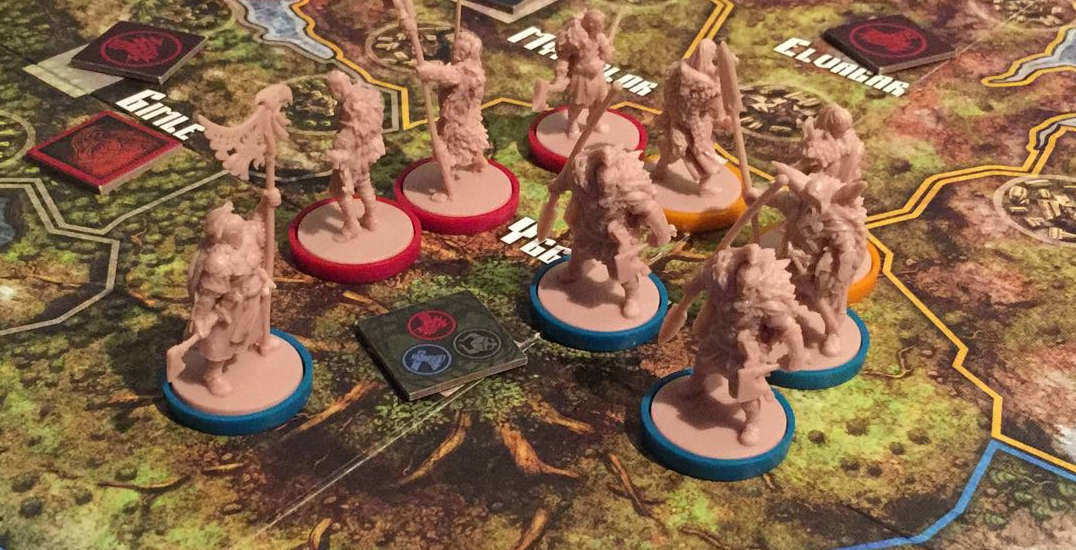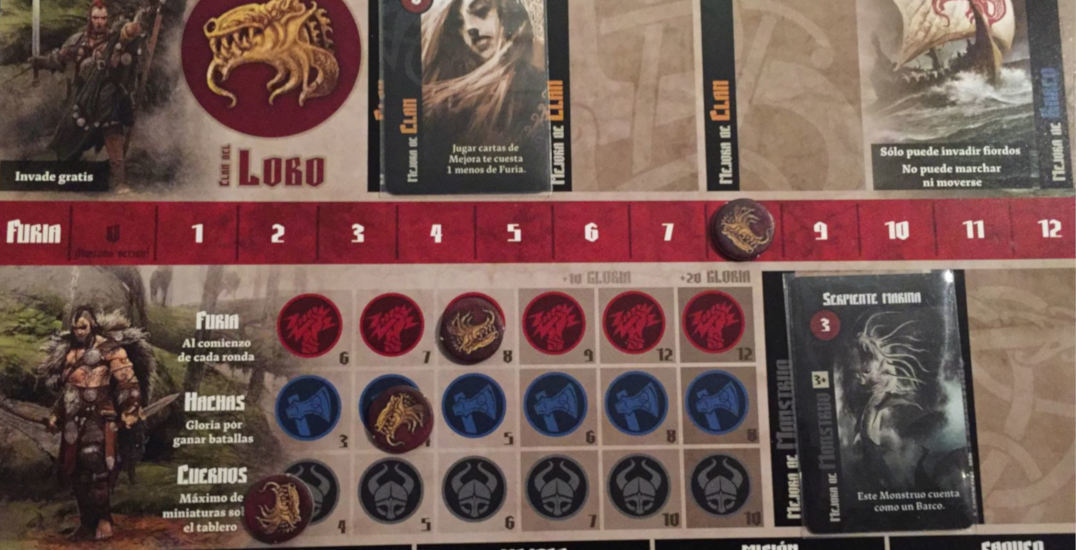
Bloodthirsty vikings battle at the end of the world in Blood Rage. Players rally their monsters and troops to fight, not in pursuit of a goal, but for its own glory. It’s a streamlined, hyper aggressive game of area control and card play.
Every time I see it, I want to play it again. But every time I do, I walk away disappointed. It’s a game on the cusp of being great, in the same way a car without brakes is almost complete.
DESIGN AND DYNAMICS
The game is built on a similar engine to that of Chaos in the Old World. Players have a certain amount of “rage” each turn, which can be spent to play cards and bring miniatures to the board. You fight, get points for doing so and whoever has the most, wins.
What differentiates Blood Rage from other Eric M. Lang designs is the presence of a draft phase. Instead of asymmetric factions, players pass cards around the table to build their hands. It’s a fun mechanic, even if it’s somewhat divorced from the fighting going on at the board.

In fact, the whole dynamic of the game is fun. The cards are powerful and shape your strategy. Threatening the right areas of the map while developing your resources is interesting, and the different units have interesting abilities. There’s also a timing element because you can “pillage” bonuses from the board, forcing a battle
OFF THE RAILS
But the moment a player makes a small mistake, the whole game goes out of the window. Blood Rage has an awful tendency to fly off the rails and create brutal runaway leaders. The cause lies with the combat system.
The way it works is very simple and somewhat reminiscent of Cosmic Encounter: You tally up the strength of your troops and then add a card face-down. Whoever has the highest total wins and the opponent is wiped out.
The problem is that the winner wins on all possible fronts. He keeps his units, he destroys the opponent’s units, he wins a long-term reward, gains a small amount of points and faces less opposition than he did before.

I often found my games of Blood Rage boiled down to the same situation: The leader tries to pillage a bonus from the board and the other players must decide whether to stop him. If they do, the whole game is decided on that battle. If not, he grows stronger and the situation repeats later down the turn. Either way, the game is essentially over.
I tried to find a way out of this situation but couldn’t find any. My games kept boiling down to a rock-paper-scissors choice in an important battle and spiraled out of control from there. The only exception was when I tried to avoid that battle, leading to both a big loss and the dullest match imaginable.
SMALL DETAILS
There are also some internal balance issues that are not game-breaking but still annoying. The “Loki” strategy of sacrificing your own units is too strong, while the “gain points through battles” mechanic is almost vestigial. Some miniatures will hit the board every time, while others seem condemned to stay in the box forever. Most importantly, there are combos that can win the game on their own if you aren’t careful enough.
 The game’s unnecessary miniatures do little to assuage my concerns. They are detailed and well-built, but plastic cannot replace stability and balance. Even on a purely aesthetic level, I’m not fully pleased. Its miniatures and art are tame, workmanlike. On the board, and on the game’s half-size cards, they become a muddle. Quite disappointing for a game set in the end of the world.
The game’s unnecessary miniatures do little to assuage my concerns. They are detailed and well-built, but plastic cannot replace stability and balance. Even on a purely aesthetic level, I’m not fully pleased. Its miniatures and art are tame, workmanlike. On the board, and on the game’s half-size cards, they become a muddle. Quite disappointing for a game set in the end of the world.
Ultimately, Blood Rage is unpleasant to play. It betrays its goal of a hyper aggressive-viking themed game by making you worry about it spinning out of control. Everytime I think about it, even right now, I think I should give it another chance. But whenever I do, reality hits me with a runaway leader, a blowout or some combo I forgot to hate-draft. It’s a game I wanted to love, but couldn’t.
| BLOOD RAGE (2015) | |||
|---|---|---|---|
| GAME DESIGN | Eric M. Lang | ||
| ART | Henning Ludvigsen, Mike McVey, Adrian Smith | ||
| NUMBER OF PLAYERS | 3-4 (Best with 4) | LENGTH | 60-75 Minutes |



